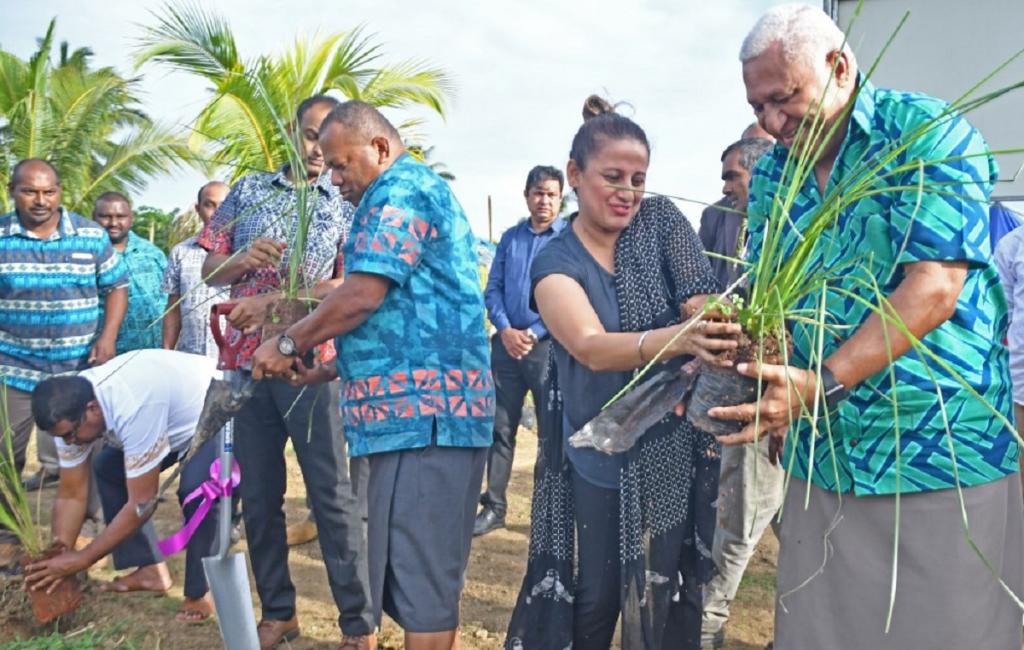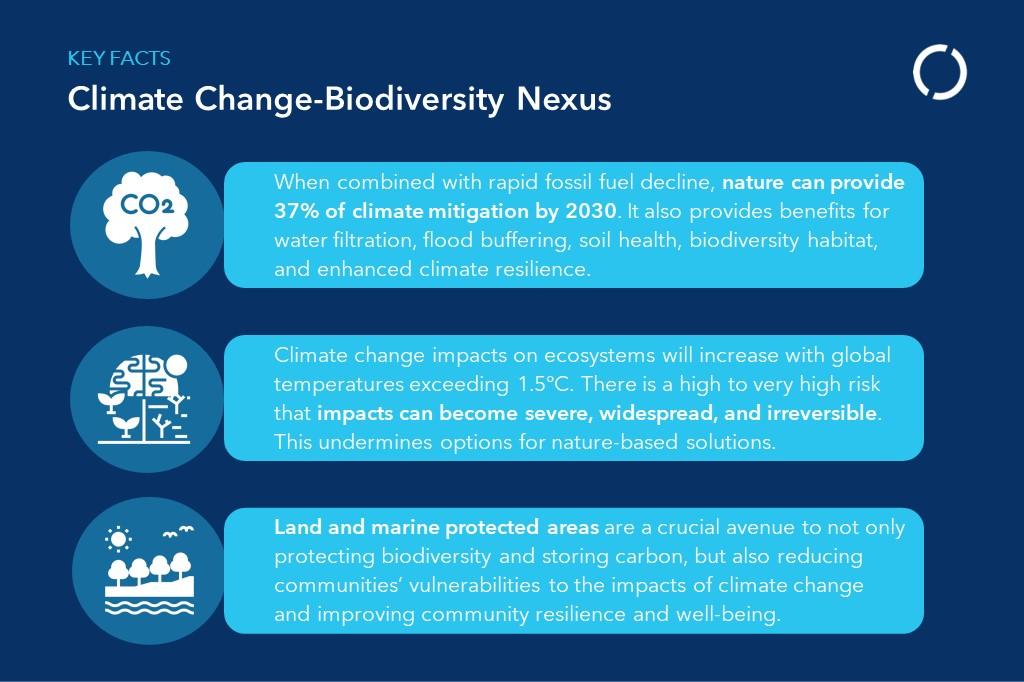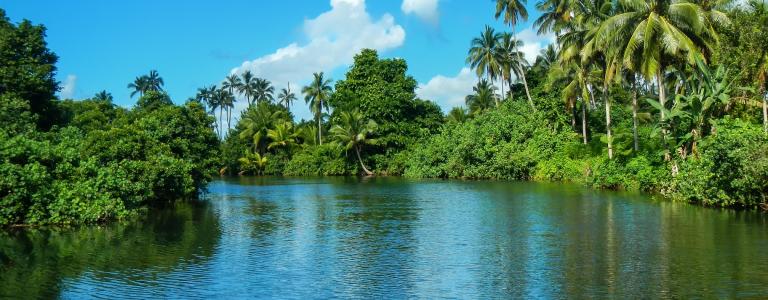Addressing Biodiversity Loss and Climate Change: Three ways adaptation planning can help
Biodiversity loss and climate change must be addressed urgently and ambitiously – until now, these agendas have remained separate, but neither will be resolved unless both are tackled together.
The urgency for action to address climate change and biodiversity loss requires coherent policy approaches that support transformative changes.
This is the central message delivered by global climate change and biodiversity experts of the Intergovernmental Panel on Climate Change (IPCC) and the Intergovernmental Science-Policy Platform on Biodiversity and Ecosystem Services (IPBES) in a historic meeting December 14 – 17, 2020. For the first time, the global scientific communities of both fields have joined forces and released an analysis that looks at the connections between climate change and biodiversity loss. Their call to action is clear: it is crucial for countries to focus on integrated approaches such as nature-based solutions (NbS).
Their call to action is clear: it is crucial for countries to focus on integrated approaches such as nature-based solutions.
Developing countries have already recognized the vital role that protecting ecosystems can play in helping people and systems adapt to climate change by including measures such as ecosystem-based adaptation (EbA) in their National Adaptation Plans (NAPs).
Bridging Biodiversity and Climate Change Adaptation
The NAP is a strategic process that aims to make people, ecosystems, and economies more resilient. It starts by analyzing current and future climatic change and assessing vulnerability to its impacts. This allows countries to then identify the most effective adaptation measures, mainstream adaptation into planning and budgeting processes at the national level, track progress and results, and evaluate areas for improvement.
Here are three ways countries are already using the NAP process as a key avenue to bridge biodiversity protection and climate adaptation.
First: Linking the NAP and the National Biodiversity Strategies and Action Plan helps countries coordinate and explore the synergies between adaptation and biodiversity protection.
The National Biodiversity Strategies and Action Plan (NBSAP) process aims to address the climate risks and vulnerabilities facing a country’s ecosystem and biodiversity. As a crucial part of the UN Convention on Biological Diversity (CBD), the NBSAP process represents the global community’s commitment to protecting biodiversity.
Countries are asked to develop their NBSAPs with considerations for potential impacts on important areas such as gender, sustainable development, traditional practices, public health, and more. Much like the NBSAP, the NAP process emphasizes the importance of a holistic approach to adaptation planning. One of these strategies often found in NAPs is protecting mangrove forests. This practice safeguards neighbouring communities from floods while also increasing habitats for coastal species. Similarly, NBSAP measures like reforestation of native species yield the climate action co-benefits of disaster risk reduction and carbon storage.
Consolidating workstreams and activities between future NBSAP and NAP processes can strengthen the synergies between biodiversity protection and climate adaptation planning. It also avoids duplication of work and waste of resources. Some key areas for collaboration include stocktaking, monitoring and evaluation, and exploring options for plan updates.
Second: Ecosystem resilience and vulnerability assessment are clear mandates of the NAP.
An analysis of the 19 NAPs submitted between 2014 and 2019 found that all of them stress the importance of incorporating detailed information about ecosystem vulnerabilities to climate change in their risk assessment. This process highlights how economies and people’s well-being rely on healthy ecosystems and emphasizes the role of nature in reducing community vulnerabilities to climate change.
As mentioned above, many adaptation strategies contribute positively to countries’ biodiversity goals. However, some can also create barriers. For example, introducing non-native tree species to help land ecosystems adapt to increasing temperatures and new disease or pest risks could threaten native species, thus affecting biodiversity protection goals.
NAP processes need to take a birds-eye view of the interactions between ecosystems, climate change, and people's livelihoods and well-being.
NAP processes need to take a birds-eye view of the interactions between ecosystems, climate change, and people’s livelihoods and well-being. Using an ecosystem-level approach to assess the co-benefits and tradeoffs of proposed adaptation actions will enable crucial science-based ecosystem safeguards.
Third: Using EbA as a central adaptation response in NAPs will help meet the objectives of multiple international agreements.
EbA is a nature-based solution that harnesses biodiversity and ecosystem services to reduce vulnerability and build resilience to climate change. EbA contributes to both ecosystem protection and climate adaptation.
Many countries are already relying on EbA measures to live in a world impacted by climate change. In Fiji, EbA forms a prominent part of the country’s NAP and allows it the opportunity to link its adaptation goals with its NBSAP. EbA strategies such as watersheds and forest restoration, as well as planting vetiver grass along riverbanks and inland slopes, help Fiji protect its vibrant and rich biodiversity while helping communities adapt to climate impacts and mitigate disaster risks. Prioritizing EbA helps Fiji achieve its obligations under the United Nations Framework Convention on Climate Change (UNFCCC), the CBD, the SDGs, and the Sendai Framework for Disaster Risk Reduction and improves the country’s resilience to the climate crisis.

NAP processes showcase how integrating biodiversity protection into adaptation planning can create co-benefits and avoid sub-optimal solutions. To prepare for this climate crisis, we need to bring together actors of science, policy, and civil society to develop and promote approaches that generate equitable and effective outcomes for climate, biodiversity, and people.

The NAP Global Network has developed a detailed guidance on how to maximize EbA in the NAP process and leverage the power of nature in building a more resilient future. Visit the NbS theme page to find out more.
You might also be interested in
How Can We Work With Nature to Tackle Drought and Desertification?
Drought is one of the most devastating and pervasive challenges exacerbated by climate change. However, we can work to reduce its effects through nature-based solutions for land restoration and climate-smart agriculture.
Estimate of Natural Infrastructure Public Grant Funding in Canada and in the Canadian Prairies
This analysis estimated the amount of public grant funding available across Canada and in the Canadian Prairie provinces for investing in urgently needed natural infrastructure.
Scaling up urban nature-based solutions for climate adaptation in Africa
Three African cities have been earmarked for a Scaling Urban Nature-Based Solutions for Climate Adaptation in Sub-Saharan Africa project—jointly managed by the International Institute for Sustainable Development and the World Resources Institute—to tackle climate change.
Tackling flash floods, urban heat, and other climate change threats in three sub-Saharan African Cities
A new project will use solutions found in nature to improve the resilience of 2.2 million people in Dire Dawa (Ethiopia), Kigali (Rwanda), and Johannesburg (South Africa).
